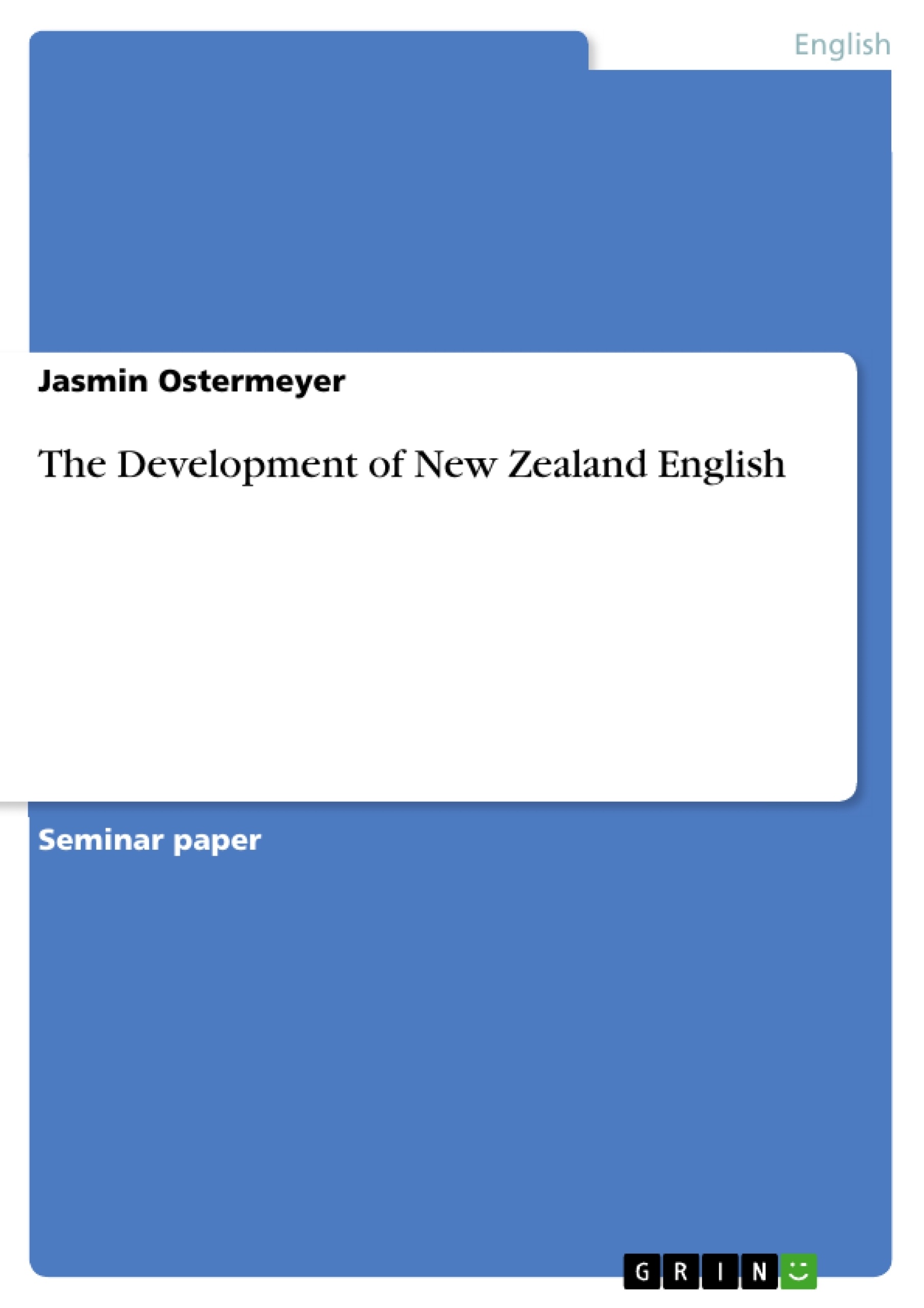When Captain James Cook’s ship, the Endeavour, arrived in New Zealand in 1769, the sailors found nothing but dangerous wilderness and some Maori people living there - and they soon left again. It took another 71 years until New Zealand became a British colony. Only few Europeans settled there before then; mainly sailors, tradesmen and whaling station workers. Nonetheless, New Zealand developed into a nation with a distinct identity and language, a variety of English. The academic analysis of New Zealand English (henceforth NZE) is a rather new field of study but many non-academic attempts have been made to explain its origins:
„Much discussion has focused on the origins of [Australian English] and [NZE] pronunciation, and at times the speculations have been wild. Some have maintained that these accents are caused by climate, by a national nose inflammation as a result of pollen or hay, and even by fear of opening the mouth on account of dust and flies; other accounts look to carelessness, laziness, some kind of gross national inferiority complex, a free-wheeling and adventurous spirit, or on outlaw heritage. Even ill-fitting dentures have been suggested as a likely cause.”
This essay will investigate the origins of NZE and its development as a distinct variety of English. As an introduction there will be a short outline of recent research on NZE and the different theories concerning its sources. Afterwards the role of the early European settlement will be discussed because the “origins and development of New Zealand English are, quite obviously, intimately intertwined with the history of immigration to new Zealand.” 3 The influence of several varieties of English shall be described, starting with the European Englishes (English English, Scottish English, and Irish English 4 ) and their significance for phonetic and lexical characteristics of NZE. The role of New Zealand’s geographical neighbour, Australia, shall be part of the analysis as well. In addition to that the contributions of a non-English source, namely the indigenous Maori language, will be discussed. The analysis only looks at these main sources. The last part of this essay shall deal with significance of language for national identity and the recent development of NZE. Changes in the vowel pronunciation of NZE speakers will be examined. Finally, some non-New Zealand attitudes towards the NZE pronunciation shall be briefly considered.
Table of Contents
- Introduction
- Recent Research on New Zealand English
- Sources of New Zealand English
- European Sources of New Zealand English
- English English
- Scottish English and Irish English
- Australian English
- Maori
- European Sources of New Zealand English
- New Zealand English in Progress: Recent Development
- Conclusion
Objectives and Key Themes
This essay aims to explore the origins and development of New Zealand English as a distinct variety of English. It will examine the various influences that shaped the language, including the role of early European settlement and the contributions of different varieties of English.
- The historical development of New Zealand English.
- The influence of European Englishes (English English, Scottish English, and Irish English) on New Zealand English.
- The impact of Australian English on New Zealand English.
- The role of the Maori language in shaping New Zealand English.
- The significance of language for national identity and the recent development of New Zealand English.
Chapter Summaries
- Introduction: This chapter sets the stage by outlining the early history of European settlement in New Zealand and introducing the concept of New Zealand English as a distinct variety. It also addresses the ongoing debate about the origins and development of the language, highlighting the contrasting perspectives of the "single origin theory" and the "mixing bowl theory."
- Recent Research on New Zealand English: This chapter explores the relatively recent academic interest in New Zealand English, tracing its development from a regional variety to an independent entity. It examines the emergence of descriptive works focusing on vocabulary, pronunciation, and grammar.
- Sources of New Zealand English: This chapter delves into the various influences that shaped New Zealand English, starting with European sources like English English, Scottish English, and Irish English. The chapter also examines the significant role of Australian English and the contributions of the Maori language.
- New Zealand English in Progress: Recent Development: This chapter explores the ongoing evolution of New Zealand English, particularly focusing on changes in vowel pronunciation. It also considers non-New Zealand perspectives on the language's pronunciation.
Keywords
The primary focus of this essay lies on the historical development and the various sources of New Zealand English. Key concepts include European Englishes, Australian English, Maori influence, national identity, and recent developments in vowel pronunciation. The essay also delves into the different theoretical perspectives on the origins of New Zealand English, specifically the "single origin theory" and the "mixing bowl theory." These concepts provide a comprehensive framework for understanding the unique features and evolution of New Zealand English as a distinct variety.
- Arbeit zitieren
- Jasmin Ostermeyer (Autor:in), 2006, The Development of New Zealand English, München, GRIN Verlag, https://www.grin.com/document/54414



